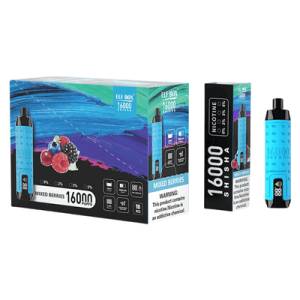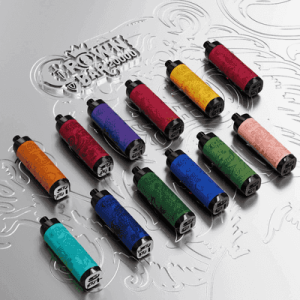The Golden Age of Vaping: The Alchemy of Premium Vape Juice And The Identity War in 2025
In a perfumery on the shores of Lake Geneva, crystal vessels shimmer in amber. Master perfumer Mathieu uses a platinum dropper to siphon a tiny amount of liquid. A drop of three-year-aged Bourbon vanilla extract from Madagascar lands in the vape juice base, instantly releasing 374 aromatic compounds. This 30ml bottle, priced at €299, is finding its way to the atomizers of the world’s wealthy at a rate of 17 per second. The high-end premium vape juice market is projected to exceed $12.4 billion by 2025, a battle quietly escalating that blends biotechnology, luxury goods, and sensory metaphysics.

Raw material revolution: luxury game at the molecular level
On an organic farm in Provence, workers wearing silk gloves pick Grasse roses before dawn. These delicate petals, bathed in Mediterranean moonlight, will enter a -196°C supercritical extraction device within three hours.
The cruel truth of the raw materials arena:
- Tobacco cells cultured with serum from Japanese Kagoshima Kuroge cattle contain 9.3ng of inosinic acid (umami amplifier) per ml
- Turkish tobacco extract aged for 2190 days in Islay whisky oak barrels yielded 27 new ester compounds
- Antarctic glacial water passes through an antimatter filter, reducing its conductivity to 0.055μS/cm, an “ultra-pure atomized carrier.”
While Silicon Valley upstarts debate the mineral permeability of Himalayan rock salt atomizer coils, child laborers in the Democratic Republic of the Congo’s cobalt mines are immersed in sulfuric acid solutions to extract battery raw materials. Premium vape juice blockchain traceability certificates, like a gilded curtain, meticulously conceal the bloody veins of the supply chain.

Neural Programming: The Ultimate Control of Your Senses
In the brain-computer interface laboratory at ETH Zurich, when subjects inhaled premium vape juice containing 0.0007% beta-damascenone, their hippocampi suddenly flashed back memories of first love’s kiss. Modern perfumers have become neurohackers:
Sensory Hijack Trio:
- Top note time folding: 3 parts per million of damascena reshapes the olfactory time perception, experiencing the three-hour blooming process in 0.8 seconds
- Medium frequency harmonic resonance: 63.4Hz sound waves modulate atomized particles to trigger the voltage sensitive channels of taste buds
- Aftertaste memory implantation: Nanoliposomes encapsulating epigallocatechin-3 (EGCG) engrave artificial nostalgia in the amygdala
Even more disturbing is the finding of a London sensory laboratory: in a double-blind test, 83% of connoisseurs rated the molecular replica of the “1961 Conti aroma” as legendary, while authentic vintage wine premium vape juice was dismissed as a fake. When technology can perfectly forge memories, authenticity becomes the most expensive luxury.
The health paradox: a respite in a golden cage
In the Platinum Clinic of Dubai Health City, CT images show that wealthy customers who have used “Golden Cell” vape juice for a long time have nano-scale gold particles attached to the surface of their alveoli – this is the “cell activation technology” claimed by the limited edition product priced at US$5,000 per bottle.
Nature Toxicology 2025 Major Research:
- The benzopyrene produced by natural vanilla extract during atomization is 3.7 times higher than that of industrial flavors.
- Ochratoxin produced during the oak barrel aging process is decomposed into carcinogen sterigmatocystin at 210℃.
- The “Eternal Series” with added nano-diamonds caused irreversible alveolar calcification in 0.9% of users
Ironically, the safest German “quantum purification premium vape juice” removes 99.1% of harmful substances through a graphene screen, but is devalued by the market as “soulless distilled water.”
Three laws of future premium vape juice:
1.Each bottle corresponds to a CT device at the Plantation Community Hospital.
2.Edible packaging contains probiotics (which nourish the soil after disposal).
3.A lung function monitoring chip directly connects to the medical AI system.
At a charity auction in Copenhagen, the first bottle of “ethically certified” premium vape juice sold for €120,000. The winning bidder publicly poured the liquid into the Baltic Sea—a performance art piece proclaiming: When luxury becomes a moral shackle, true dignity lies in the right to refuse to inhale.

Under the dome of Milan’s La Scala Opera House, a soprano pushed open a diamond-encrusted atomizer. “My vocal cords are insured for €6 million,” she gazed at her sponsors. “And in your liquid, even the truth is atomized.” Outside, protesters’ laser projections projected a giant message onto the clouds: “We refuse to breathe inequality.”
The paradoxical era of premium vape juice will eventually go down in the history of technological civilization. Even as quantum computers can simulate the most complex aromas, and blockchain can trace the history of every drop of liquid, humanity remains stuck in its original conundrum:
Are we enjoying the sacrament of sensory evolution, or inhaling the toxic fog of identity anxiety? The amber liquid swirling in the custom atomizer reflects both humanity’s power to conquer nature and the final elegy of material worship. And the truth, like deliberately ignored laboratory data, quietly flickers in some unknown corner, waiting for the light to penetrate the smog.
